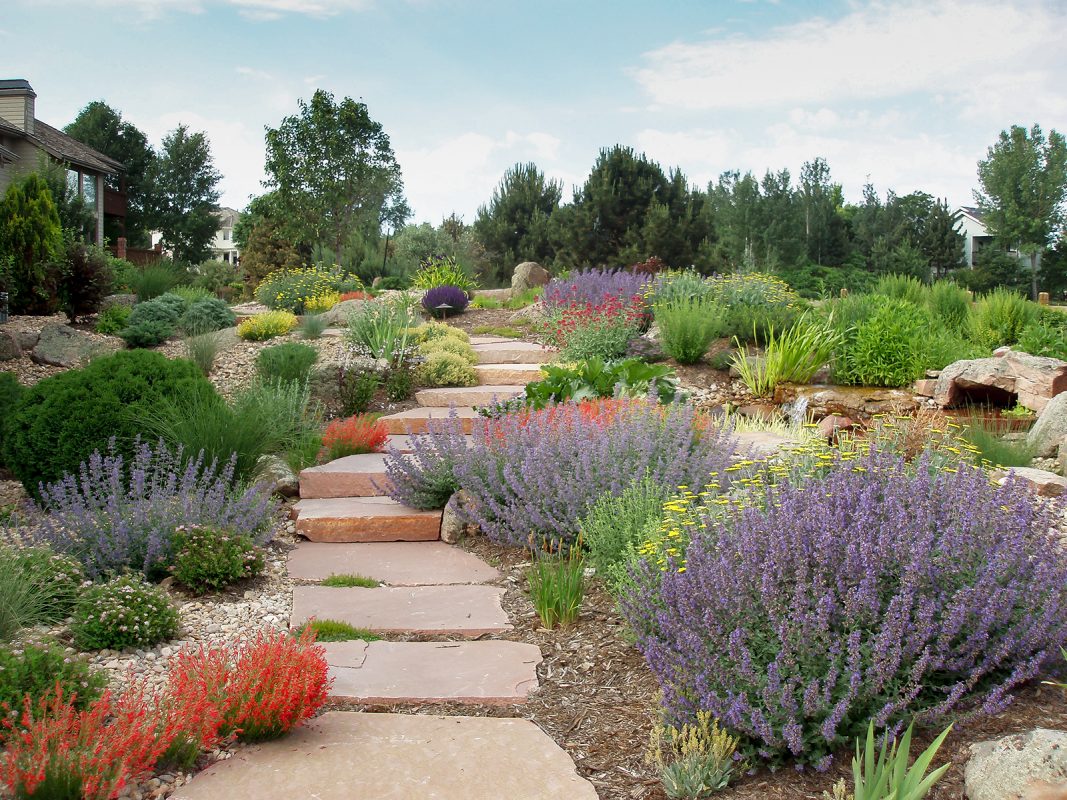If the concept of xeriscaping brings to your mind visions of brown, dry landscaped areas, then it’s time to re-think your idea of this trend. Xeriscaped yards don’t have to look like something from the desert.
Many people think of xeric landscaping as that which contains plants that are only found in very dry areas or those that need little or no water at all. This is a misconception as the true principals behind xeric landscaping involve using plants which use less water then choosing, grouping and planting them according to their water needs. It also includes improving the poor soil generally found in our region, using mulches to conserve water, irrigating effectively, planting and designing in an appropriate manner and limiting turf areas.
Some people pronounce it zero-scape because they believe that once planted, these trees, shrubs, annuals and perennials will need zero water. This is a misconception because all plants will need some water in order to survive.
Begin your xeric project by thinking about your yard and what you’d like to emphasize the most when people enter. This area might be brighter and more colorful by using annuals and containers that have low water requirements but will still need some regular waterings. Areas that are less visually important, such as a backyard, could use plants which require little to no water or perhaps be left to naturalize.
Plants used in xeric landscaping should be those that are native to the area, if possible. Native plants have already adapted to our climate and there are many which have excellent ornamental value and they aren’t all cactus either! Sandcherry, serviceberry, sumac, ponderosa pine, penstemon, and yarrow are just some of the natives available found our area that are also good choices for your xeric landscape.
There are also many annuals and perennials that you wouldn’t necessarily expect to be classified as xeric, yet they appear on Colorado’s xeric list. Even though they may not be native to the area, they are still good choices for what will work well in your xeric landscape because of their low water requirements. Some of these include petunias, alyssum, lantana, gazanias, day lilies, rudbeckias, lavender, but there are many more.
Once you’ve planned and planted your garden, keep an eye on the water. Xeric plants will need water for the first year in order to become established but should only need little additional water once that happens. Check the label for the requirements for that particular species when you purchase your plants in order to know if that is one that might need some special attention like supplemental water if we happen to have a very dry year.
Trees and shrubs require frequent watering until they are established which usually means the first one or two years but this can easily be done on a tree by tree basis with a bucket or watering can. Mixing in compost or other soil amendments will help them establish and root in more throughly and aid in their overall survival. Mulching well around your plants will also help them retain water, keep the roots moist, and make supplemental water less necessary.
Your lawn is one of the greatest users of water. If possible and you are truly trying to stick to xeric principles, then make your lawn as small as practical. Consider using a low water grass mix or planting trees or shrubs which have low water needs in these areas instead. Lawn areas can also be reduced by introducing patios, decks and walkways to your yard and dry creek beds can give the feeling of water without the actual stream while still providing a pleasant appearance.
There are lots of ways to conserve water, use what is available wisely, and still have a beautiful yard. Xericaping is a good way for homeowners looking to landscape to use this precious resource to its best advantage.

